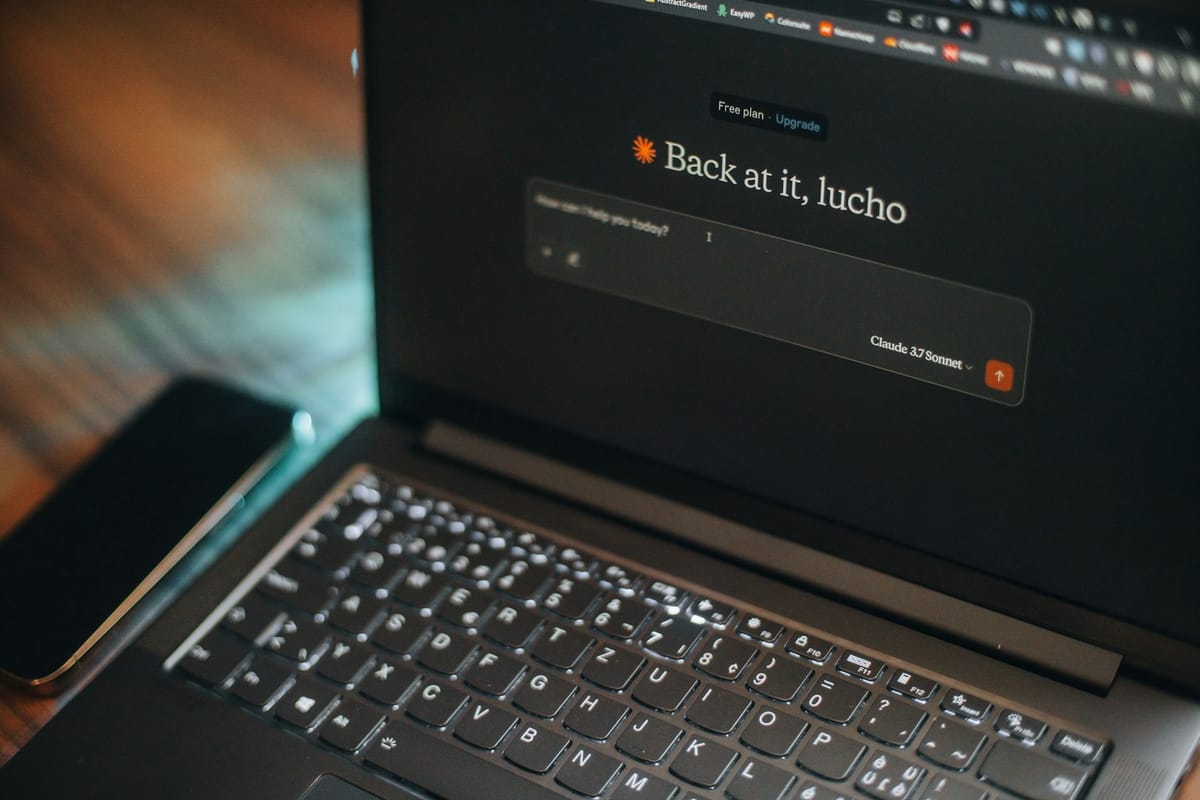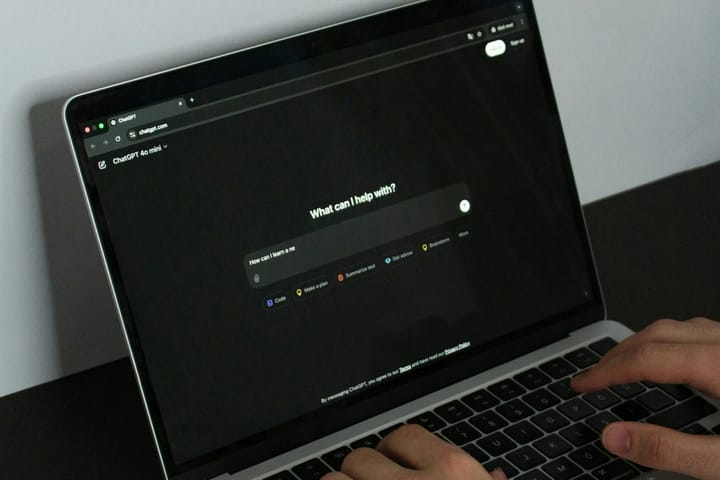Effective AI Prompting Techniques: A Comprehensive Guide
Effective AI interactions depend on prompt types: zero-shot uses no examples, few-shot includes some, and chain-of-thought encourages step-by-step reasoning. Each technique enhances output quality and clarity significantly.

Even advanced AIs sometimes need a helpful nudge or example from us to produce their best answers. A simple change in how we ask a question can make a big difference. We can give no examples, offer a few examples, or guide it to think step-by-step. Each method can turn a confusing answer into a brilliant solution.
These prompting techniques are called zero-shot, few-shot, and chain-of-thought. AI practitioners use these as key techniques to maximize the potential of modern language models. By understanding these prompt types, anyone working with AI can communicate more effectively and trust the outputs.
Late one evening, I was using ChatGPT. I typed a straightforward question into the model. I hoped it would draft a helpful response for a client. The answer it gave was only okay, technically correct but bland and not quite what we needed. Curious, I tried something different. I added a couple of example question-and-answer pairs before asking the same question again.
This time, the AI’s reply was not only precise but also perfectly in tune with our my tone. Finally, I went a step further and prompted the model to explain its reasoning step-by-step before giving the final advice. The result was a response that was both correct. It was easy to follow, as if the AI was showing its work like a math teacher on a chalkboard. That night, I experienced firsthand the significant impact of the types of prompts we use. It can dramatically change an AI’s output, whether zero-shot, few-shot, or chain-of-thought.
In this blog post, we will explore the types of prompts – zero-shot, few-shot, and chain-of-thought – in depth.
Understanding the Types of Prompts
Before diving into each technique, let’s clarify what these terms mean at a high level. In AI, prompting simply refers to how we phrase our requests to a language model. Depending on how much help we give the model, we generally talk about zero-shot, few-shot, or chain-of-thought prompts.
Zero-shot Prompting
- Zero-shot prompting involves not providing any examples. Just ask your question or give an instruction. Let the model respond using its existing knowledge.
- For example, if you say “Translate this sentence into French” without any French examples, that’s a zero-shot prompt. The AI must rely entirely on what it learned during training to do the task.
- This approach often works for many tasks. The model has seen so much text. Nonetheless, it can be hit-or-miss if the request is unclear or very novel.
Few-shot Prompting
- Few-shot prompting means you include a few examples in your prompt to show the AI what you expect.
- It’s like saying, “Here are a couple of examples of the right question-and-answer.” We then ask, “Now please do the same for this new question.” The model uses these examples to understand the pattern or format, a behavior called in-context learning.
- For instance, you show two math problems and their solutions. Then, you ask a third problem. The model will try to follow the same method.
- This was famously demonstrated with GPT-3 in 2020. Given a few examples, the model can execute new tasks. It achieved this without any extra training.
- Few-shot prompts are great for guiding the model when simple instructions aren’t enough.
Chain-of-thought Prompting
- Chain-of-thought prompting involves guiding the model to produce a step-by-step reasoning process.
- Instead of just asking for the answer, you prompt the AI to explain its thinking. You also encourage it to show its work along the way. For example, rather than directly asking “What’s the answer to this riddle?”, you say “Think through the steps and explain the reasoning, then give the answer.”
- By doing this, the model often gets complex problems right more often, because it doesn’t skip steps. Researchers found that adding these “thought steps” in prompts helped AIs solve math and logic problems much more accurately.
- Chain-of-thought prompts are especially useful for complex questions where a little reasoning helps avoid mistakes.
These three prompting styles are not magic spells but clever ways to communicate with AI models. Each has its place. Now, let’s explore each one in detail and see how they can be applied in real-world scenarios.
Zero-Shot Prompts: Making the Most of Pre-Trained Intelligence
In my experience, zero-shot prompts shine for quick, straightforward tasks. I remember a time when I had a lengthy technical report to digest at work. I decided not to read it fully. Instead, I simply asked the AI to “Summarize the key points of this report in one paragraph.”
With no examples given, the model delivered a coherent summary that saved me at least an hour. I hadn’t shown it what a “good” summary looks like. It just knew how to do it. The AI learned that skill from the millions of documents in its training data.
This is the power of zero-shot prompting: the model taps into its vast pre-trained knowledge to respond. It’s like asking a well-read colleague a question and getting an instant answer. The upside is you don’t have to hand-hold the AI – just ask in plain language. For common tasks like translating a sentence or answering a factual query, zero-shot is often all you need. The AI has seen something similar before and can generalize to your request.
Nonetheless, this approach isn’t perfect. If your prompt is vague or the task is very unusual, the AI can misinterpret what you want. A colleague of mine once typed “Improve this draft” into an AI writing tool. They got back a result that unexpectedly changed the tone and style. The instruction was too open-ended. With zero-shot prompts, the AI has no examples to anchor its understanding.
As a result, it can give a generic answer. It can even stray into misinformation if it’s unsure. I’ve seen it occasionally make up facts when it’s out of its depth. The lesson here is that for zero-shot queries, phrasing the request clearly is crucial. If the answer comes back shaky, that’s a sign you should switch tactics. Give the model more guidance.
Few-Shot Prompts: Learning from a Handful of Examples
One way to explain few-shot prompting is to think of training a new intern using examples. You show how to do a couple of tasks correctly. Then, you ask them to do the next one in the same way. In the AI’s case, we literally include those examples in our prompt and let the model continue the pattern.
I experienced the impact of few-shot prompts when I was building a tool to extract information from emails. My first try was zero-shot: “Find the email topic and date in this email.” Sometimes it worked, but it often missed the mark or formatted the answer incorrectly.
So, I switched to a few-shot approach. I provided two example emails with the correct extracted outputs. They included email topic and date. Then, I added a third email for the model to process. The improvement was remarkable. The AI easily followed the pattern from the examples. It produced a flawless extraction for the new email. It was as if I showed it a mini-lesson and it aced the test right after.
Few-shot prompting works because the model is performing in-context learning – it learns from the examples on the fly. The prompt’s examples help the AI understand what you’re asking for without any further training. This technique is incredibly versatile.
For example, if you want a chatbot to adopt a friendly tone, show a few sample question-and-answer pairs. Make sure these examples use that friendly style. Then, ask it to answer a new question. The chatbot will respond in a similar tone, imitating the style you provided. Even unusual tasks can be tackled with the right examples. GPT-3 and above famously demonstrated that it use a made-up word in a sentence correctly. It also does simple arithmetic by seeing a few examples first.
To get the most out of few-shot prompts, your examples should be relevant and high-quality. The AI is essentially mirroring what you show it. If the examples are inaccurate or inconsistent, the model can pick up those errors or get confused.
I’ve learned to keep the examples clear and to the point. Often, just 3 to 5 well-chosen samples illustrate the pattern. This avoids overwhelming the model. Also, it’s crucial to align your expectations from the AI. If you give examples of polite, concise answers, you’ll get a polite, concise reply.
Few-shot prompting can feel like a cheat code for difficult tasks. With the right demonstrations, you often get far more precise and tailored outputs. They are more effective than a single, generic instruction.
Chain-of-Thought Prompts: Reasoning Through Problems Step by Step
Some questions can’t be answered with a single jump. You might find yourself writing out the steps on paper when faced with a brainteaser. This approach helps you solve tricky math problems. Chain-of-thought prompting helps an AI show its work. It does this by breaking down a problem into intermediate reasoning steps. This happens before giving the final answer.
I encountered this with an AI when planning a complex project timeline. I initially asked the model to generate a full project schedule in one go. The plan it gave had some conflicting steps. So I changed strategy. I prompted the AI in stages. First, I asked it to list all the key tasks and their dependencies. Next, I requested it to order these tasks logically. Finally, I asked it to propose a timeline. By walking it through the problem step by step, the final schedule it produced made sense and had no conflicts. In essence, I had the AI think out loud. The quality of the solution improved dramatically compared to its first attempt.
This idea of prompting an AI to reason through each step has strong support from research. In 2022, AI researchers at Google found something significant. Giving models a few examples of step-by-step solutions in their prompts boosted the models’ accuracy. This was especially true for math word problems and logic puzzles, where accuracy improved by a large margin.
Suddenly, questions that the AI used to get wrong were answered correctly. This happened because the model wasn’t trying to do it all in its head at once. Instead, it was laying out the logic. Today, chain-of-thought prompting is a go-to technique for tasks that involve complex reasoning, arithmetic, or multi-step decisions.
There are many practical uses for chain-of-thought prompts wherever careful reasoning is needed.
- In customer service, for instance, an AI agent is prompted to go through a troubleshooting process step by step. The process includes instructions like “First, check this.” Then, it will say “Consider that.” These steps are followed before arriving at a solution for a customer’s issue.
- In education, a tutoring AI can use chain-of-thought to show a student how to solve a problem. This is better than just giving the answer. It makes the response far more instructive.
One thing to keep in mind, though, is that seeing reasoning doesn’t guarantee it’s correct. I’ve seen an AI confidently explain its way to a wrong answer on a tricky riddle. The logic sounded good. Yet, it made a bad assumption at the start. Chain-of-thought prompts greatly enhance transparency and often accuracy. Still, it’s wise to double-check the final answer. This is especially important for high-stakes questions.
When to Use Zero-shot, Few-shot, or Chain-of-Thought Prompts
So how do you decide which type of prompt to use for a given task? In practice, I often start simple and then add complexity if needed. If it’s a straightforward request, I’ll try a zero-shot prompt first because it’s quick and no-fuss. If the output is too generic, I’ll switch to a few-shot prompt. I add some examples to clarify the format or style.
A question is especially complex. It also requires careful reasoning. For example, a multi-step math problem or a tricky decision-making scenario require this. That’s when I turn to a chain-of-thought approach. I prompt the AI to work through the problem step by step.
These methods aren’t mutually exclusive – sometimes the best solution is a mix. I will give a few examples and encourage reasoning steps, effectively combining few-shot and chain-of-thought in one prompt. Prompt engineering is an iterative, experimental process. You try one approach. You see what the model produces. Then, you refine your prompt if you’re not getting the desired result.
Over time, you develop an intuition. For instance, you learn that a smaller or older model will struggle with zero-shot on a tough task. Yet, it improves a lot with a couple of examples. A cutting-edge model will surprise you by handling it zero-shot just fine. The key is to be flexible. Think of it like adjusting your communication style depending on who you’re talking to. With AI, you adjust the prompt strategy depending on the task and the model.
Choosing the right prompting approach is part art and part science. There’s no one-size-fits-all answer, but that’s the beauty of it. You can iteratively hone your prompts to guide the AI, all in natural language. If one method doesn’t give a good result, you can pivot to another without any heavy setup or coding. This flexible toolkit of zero-shot, few-shot, and chain-of-thought techniques keeps you from getting stuck. There’s always another way to ask the question. You can coax out a better answer.
Future of Prompting
Crafting prompts for AI is as much an art as it is a science. There is creative joy in finding the perfect way to ask a question. It results in getting a brilliant answer. We saw how different strategies – zero-shot, few-shot, and chain-of-thought – unlock different strengths of a language model. My own experience in using prompts has been full of “aha” moments when a small tweak made a big difference. At the same time, it taught me to stay cautious. An AI can sound confident. Still, being skilled at this involves knowing when to double-check its work.
The world of prompting is evolving quickly. AI developers are finding ways to make models follow instructions more reliably (so that even zero-shot prompts become more precise). Research is being conducted on AI systems that can critique their own answers. These systems can also refine their answers, which reduce the trial-and-error we do with prompts. We’re even seeing tools that help users come up with better prompts automatically.
Imagine an AI helping you talk to another AI! All these advances point toward a future where interacting with AI becomes easier and more intuitive. But no matter how advanced these systems get, the fundamental idea will continue. How you ask is crucial to what you get.
For anyone working with AI, understanding these prompt types is important. This includes developers, content creators, and business leaders. It is a practical skill. Don’t be afraid to experiment. Start with a simple question. Then add an example or two. Ask the model to explain its reasoning. You’ll find it’s like having a conversation with the AI. Sometimes you need to rephrase or give it a hint, much like you would when clarifying something to a colleague.
In the end, prompt engineering is about collaboration between human and machine. You bring the context, examples, and guidance; the AI brings its vast knowledge and pattern recognition. When done right, this collaboration can produce results that feel impressively like “AI magic.” As AI technology progresses, those who know how to speak its language will thrive. Crafting well-designed prompts will allow them to harness the full potential of these powerful tools.



Comments ()